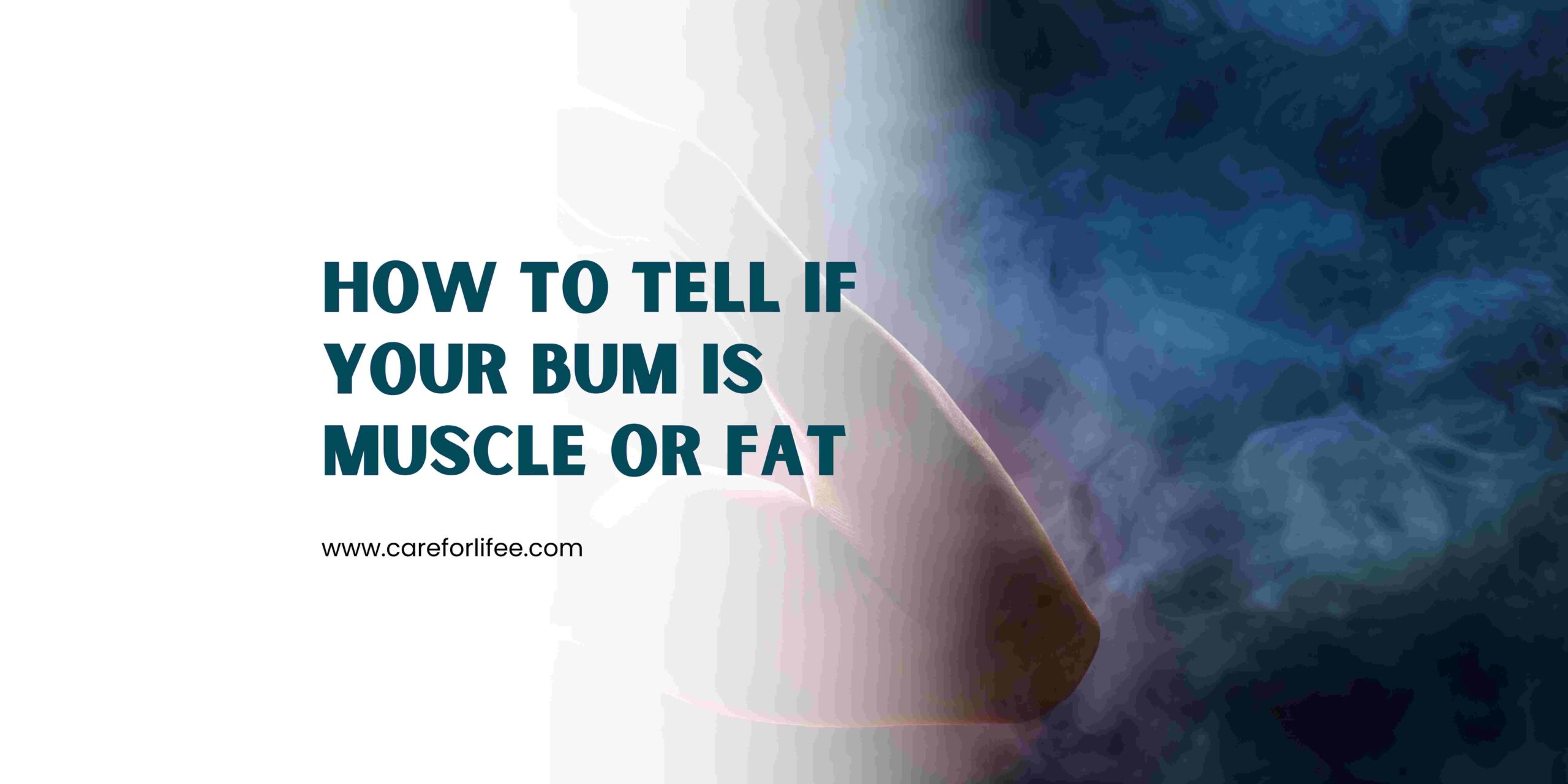How to Tell if Your Bum is Muscle or Fat?
If you’re interested in fitness or just want to improve your overall health, you might be wondering whether your bum is made up of muscle or fat. While having some fat on your bum is normal and healthy, having too much can negatively affect your overall health.
On the other hand, having well-developed muscles in your bum can help support your body and improve your athletic performance. In this article, we’ll discuss how to tell if your bum is muscle or fat, and offer some tips on how to optimize your fitness goals.
Understanding the Basics of Muscle and Fat
Before we dive into assessing your bum, it’s important to understand the differences between muscle and fat. Muscle is a dense, fibrous tissue that contracts and relaxes to produce movement.
It requires energy to build and maintain and is typically developed through strength training exercises. Fat, on the other hand, is a softer tissue that serves as an energy store for the body. It is typically stored underneath the skin and around internal organs and can accumulate when you consume more calories than you burn.
While having some fat on your bum is normal and healthy, having too much can negatively affect your overall health. Excess fat can increase your risk of developing health problems like heart disease, type 2 diabetes, and certain cancers. On the other hand, having well-developed muscles in your bum can help support your body and improve your athletic performance.
Assessing Your Bum
Now that you understand the basics of muscle and fat, let’s talk about how to tell if your bum is muscle or fat. Here are some visual cues to help you determine which tissue is more prominent in your bum:
Muscle
- Your bum looks rounded and firm.
- Your bum feels dense and firm to the touch.
- Your bum has a defined shape with visible muscle separation.
- Your bum feels sore after a workout targeting your glutes.
Fat
- Your bum looks flatter and wider.
- Your bum feels soft and jiggly to the touch.
- Your bum lacks a defined shape and muscle separation.
- Your bum does not feel sore after a workout targeting your glutes.
It’s important to keep in mind that everyone’s body is different, and some people may have more muscle or fat in their bum than others. Additionally, genetics, age, and lifestyle factors like diet and exercise can all influence the distribution of muscle and fat in your bum.
Exercises to Build Muscle in Your Bum
If you’ve determined that your bum is lacking muscle, there are plenty of exercises you can do to build strength and improve your overall health. Here are some effective exercises to target your glutes:
- Squats: Stand with your feet shoulder-width apart and squat down as low as you can, keeping your back straight and your knees over your toes. Return to standing and repeat.
- Lunges: Stand with your feet together and take a large step forward with your right foot. Lower your body until your front knee is bent at a 90-degree angle, then push back up to standing. Repeat on the other side.
- Deadlifts: Stand with your feet shoulder-width apart and hold a weight in front of your body with both hands. Hinge forward at the hips and lower the weight towards the ground, keeping your back straight. Return to standing and repeat.
- Glute bridges: Lie on your back with your knees bent and your feet flat on the ground. Lift your hips up towards the ceiling, squeezing your glutes at the top, then lower back down and repeat.
It’s important to gradually increase the weight or resistance in your exercises to continue challenging your muscles and promoting growth. Additionally, it’s a good idea to vary your workouts and incorporate different exercises to target different parts of your glutes.
Diet and Nutrition for a Toned Bum
While exercise is important for building muscle in your bum, nutrition is also key. In order to support muscle growth and reduce excess fat, it’s important to maintain a healthy diet. Here are some tips and suggestions for optimizing your nutrition for a toned bum:
- Eat a balanced diet with plenty of protein, complex carbohydrates, and healthy fats.
- Avoid processed foods and sugary snacks, as these can contribute to excess fat storage.
- Drink plenty of water to stay hydrated and support healthy digestion.
- Consider incorporating supplements like protein powder or creatine to support muscle growth.
Remember, it’s important to consult with a healthcare professional or registered dietitian before making significant changes to your diet.
Lifestyle Factors that Affect Muscle and Fat in the Bum
In addition to exercise and nutrition, lifestyle factors like sleep, stress, and hormones can also impact muscle growth and fat loss in your bum. Here are some tips and strategies for optimizing these factors:
- Aim for 7-9 hours of sleep per night to support healthy hormone levels and promote muscle recovery.
- Manage stress through practices like meditation, yoga, or deep breathing exercises, as chronic stress can contribute to excess fat storage.
- Consider talking to a healthcare professional about hormone imbalances or conditions like polycystic ovary syndrome (PCOS) that can affect muscle and fat distribution.
Conclusion
Whether you’re looking to build muscle or reduce excess fat in your bum, it’s important to understand the basics of muscle and fat, assess your current body composition, and make adjustments to your exercise, nutrition, and lifestyle habits. By following the tips and suggestions outlined in this article, you can achieve a toned and healthy bum that supports your overall health and fitness goals.






